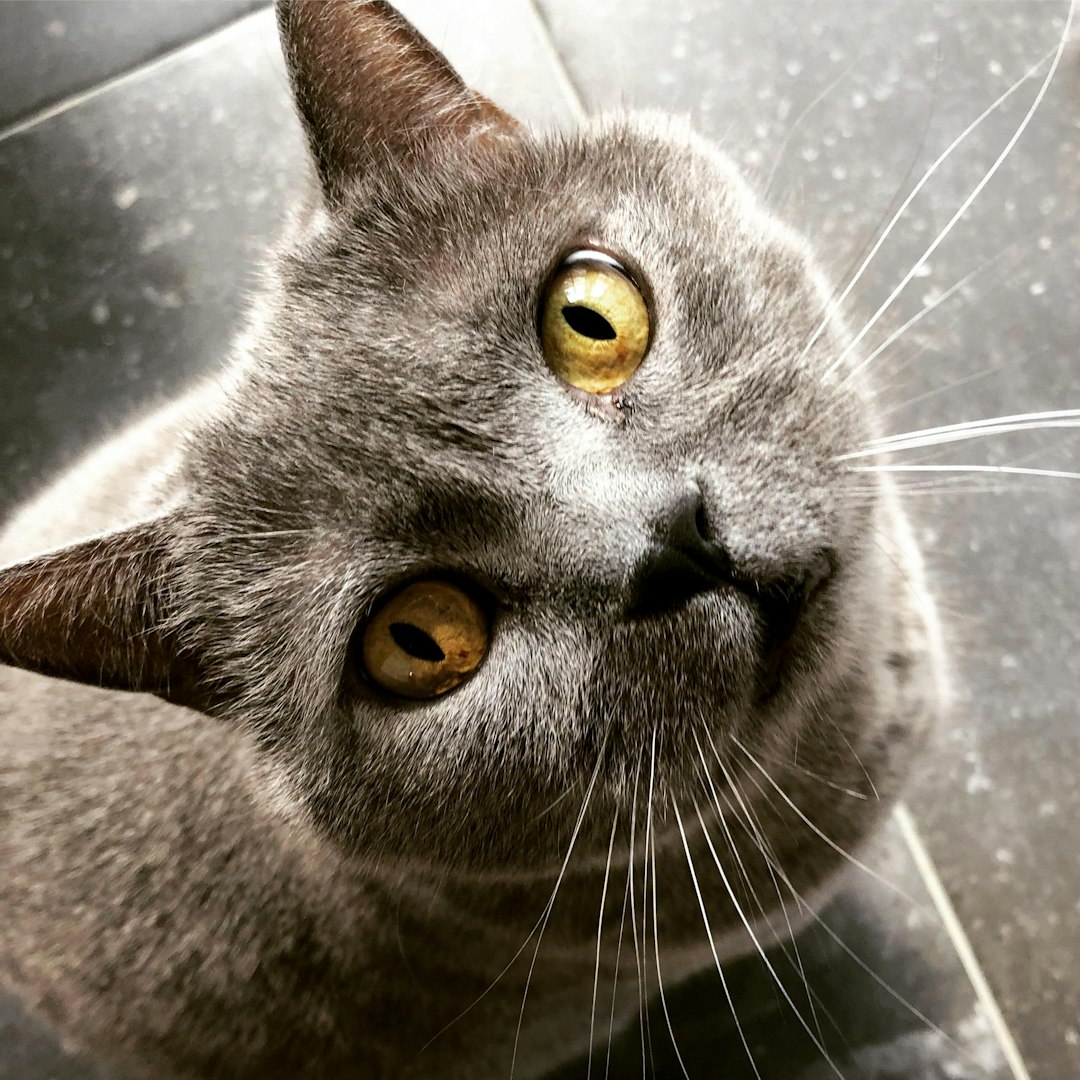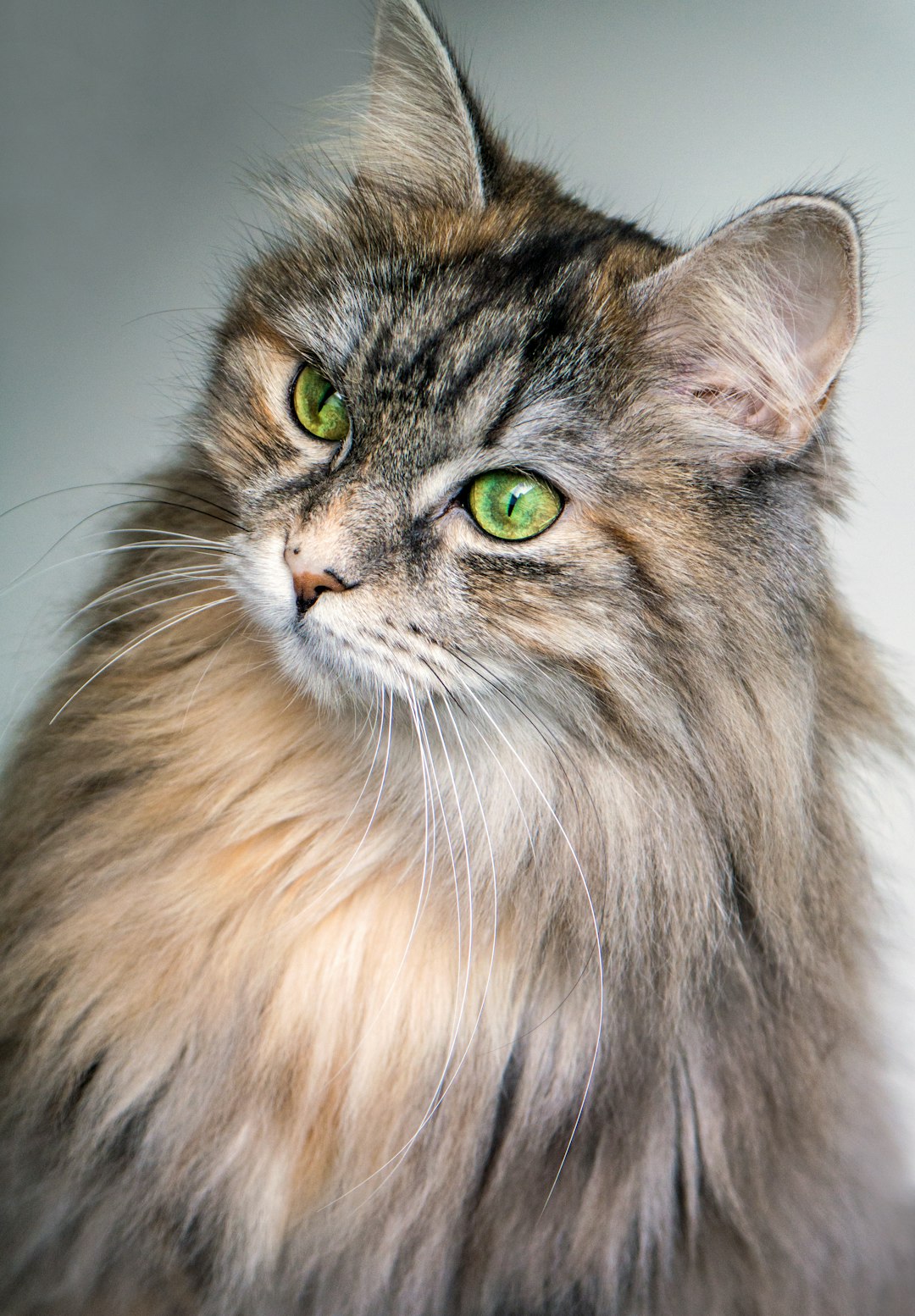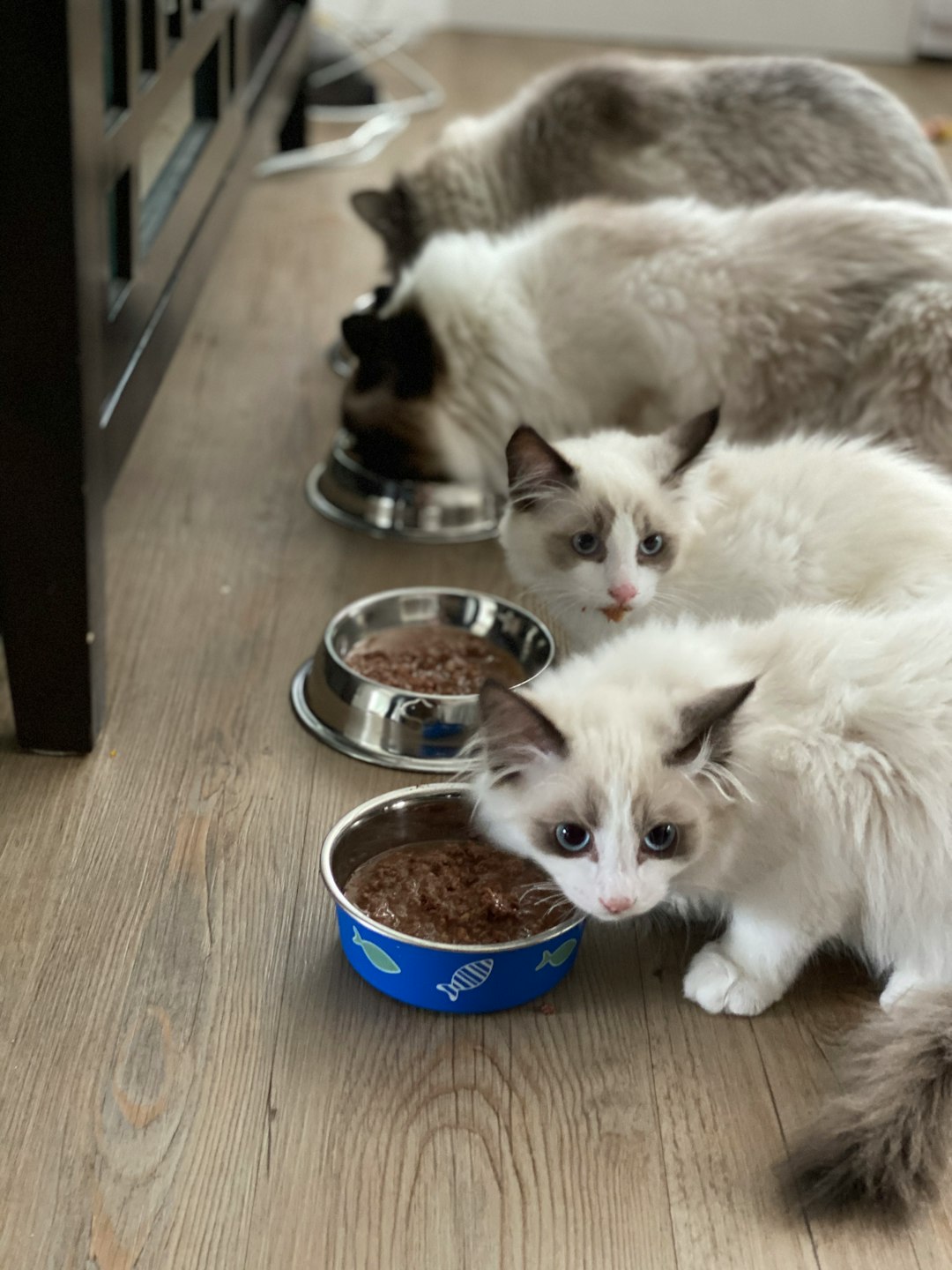When your beloved feline friend exhibits signs of distress, it can be a worrying experience for any cat owner. One alarming symptom to watch out for is a heavy breathing cat. This difficulty in breathing can indicate various underlying health issues, ranging from minor to severe. Therefore, it’s essential to understand the signs that come with heavy breathing, assess your cat’s condition accurately, and be aware of the common causes. In this blog post, we will explore the necessary steps to take when you notice your cat breathing heavily, including when to seek veterinary care and preventive measures to keep your furry companion healthy and comfortable. By staying informed and proactive, you can ensure that your cat receives the care it needs.
Understanding Heavy Breathing in Cats
What Does Heavy Breathing Mean?
Heavy breathing in cats often indicates that your feline friend is experiencing a disturbance in normal respiratory function. Unlike casual panting or mild exertion-related breathing, heavy breathing can suggest underlying issues that might require attention. A cat’s normal respiratory rate is typically between 20 to 30 breaths per minute. If their breathing pressure increases significantly or becomes labored, it may signal a health concern.
Common Causes of Heavy Breathing in Cats
There are various factors that can contribute to heavy breathing in cats, including:
| Cause | Description |
|---|---|
| Asthma | A chronic inflammatory disease causing difficulty in breathing. |
| Heart Disease | Conditions such as cardiomyopathy can lead to fluid accumulation in the lungs. |
| Obesity | Excess weight can restrict lung function and lead to labored breathing. |
| Infection | Respiratory infections may cause inflammation and excess mucus, affecting airflow. |
| Trauma | Injuries to the chest can restrict breathing and require urgent evaluation. |
When to Be Concerned About Heavy Breathing
It’s essential to monitor your cat closely. Some signs that signify an urgent situation include:
- Rapid or Labored Breathing: Breathing that seems forced or extremely fast.
- Coughing or Wheezing: Noise during exhalation can indicate airway obstruction.
- Cyanosis: A bluish tint around the gums or tongue, indicating oxygen deprivation.
- Lethargy or Weakness: A marked change in behavior, as cats will often hide discomfort.
Recognizing these signs can help you act swiftly, ensuring your cat receives the necessary care promptly. Keeping track of your pet’s health and behavior will contribute to their overall well-being.
Signs Accompanying Heavy Breathing
When it comes to your feline’s health, recognizing the signs accompanying heavy breathing cat episodes is crucial. Heavy breathing can indicate underlying issues that demand thorough observation. Here’s a breakdown of key signs to consider:
Recognizing Additional Symptoms
Aside from heavy breathing, some common symptoms include:
| Symptom | Description |
|---|---|
| Coughing | A persistent cough can indicate respiratory distress. |
| Excessive Thirst | Increased water intake might hint at other health issues. |
| Lethargy | Noticeable fatigue or disinterest in activities. |
Behavioral Changes to Watch For
Behavioral changes often reflect your cat’s discomfort. Watch for:
| Change | Description |
|---|---|
| Hiding | Retreating to secluded spots can signify stress. |
| Restlessness | Pacing or difficulty staying still may indicate distress. |
| Loss of Appetite | Refusal to eat can lead to weakness and further complications. |
Physical Signs of Distress in Your Cat
Physical observations provide critical insights into your cat’s well-being. Key signs include:
| Sign | Description |
|---|---|
| Labored Breathing | Rapid or shallow breathing observed while at rest. |
| Blue-tinged Gums | Cyanosis, or bluish discoloration, can signal oxygen deprivation. |
| Open-Mouth Breathing | Cats typically breathe through their noses; open-mouth breathing can indicate serious distress. |
Being attentive to these signs can help you address any potential issues early, ensuring your beloved cat receives the necessary care.
Assessing Your Cat’s Condition
Understanding how to assess your cat’s condition can be crucial when you notice a heavy breathing cat. Here are some effective methods to evaluate their health.
How to Check Your Cat’s Breathing Rate
To assess your cat’s breathing rate, follow these steps:
- Calm Environment: Ensure your cat is in a quiet space to avoid excitement that can elevate the heart rate.
- Observe: Count the number of breaths your cat takes in one minute. Normal rates typically range from 20 to 30 breaths.
- Record Findings: Use the table below to compare your findings:
| Breathing Rate | Assessment |
|---|---|
| 10-20 breaths/min | Low; possible concern |
| 20-30 breaths/min | Normal |
| 30-40 breaths/min | Mild distress |
| 40+ breaths/min | High distress; seek care |
Monitoring Your Cat’s Overall Behavior
Take note of any behavioral changes, as these can indicate health issues. Here are signs to observe:
- Activity Level: Is your cat less active or more lethargic?
- Appetite: Has there been a change in their eating habits?
- Vocalization: Are they more vocal or unusually quiet?
Maintaining a behavioral record can help provide essential information to your veterinarian.
Using a Stethoscope to Listen to Breathing
If available, using a stethoscope can help you hear abnormal sounds such as wheezing or raspy breaths. Here’s how to use it effectively:
- Positioning: Place the stethoscope on their chest and listen for irregularities.
- Identify Sounds: Normal breathing sounds are gentle; listen for any wheezing or crackling.
- Document: Take note of qualitive descriptions of the sounds; this information can be invaluable for your vet.
By assessing your cat’s breathing rate, behavior, and sounds, you can better gauge your pet’s health status and determine whether immediate action is needed.
Common Causes of Heavy Breathing in Cats
Heavy breathing, or heavy breathing cat, can stem from various underlying issues. Understanding these potential causes is crucial for cat owners. Here are some common culprits:
Respiratory Infections and Conditions
Respiratory infections in cats, such as viral or bacterial pneumonia, can lead to heavy breathing. These infections irritate the airways and lungs, causing inflammation and fluid accumulation. Other conditions include:
| Condition | Description |
|---|---|
| Feline Asthma | A chronic inflammatory condition causing wheezing. |
| Bronchitis | Inflammation of the bronchi results in labored breathing. |
| Feline Viral Rhinotracheitis | A viral infection that can cause significant respiratory distress. |
Heart Problems That May Cause Heavy Breathing
Cardiovascular issues can also result in heavy breathing in cats. Conditions such as hypertrophic cardiomyopathy (HCM) can lead to fluid buildup in the lungs, making breathing difficult. Some common heart-related problems include:
| Condition | Symptoms |
|---|---|
| Congestive Heart Failure | Accumulation of fluid leading to shortness of breath. |
| Arrhythmias | Irregular heartbeat affecting oxygen flow. |
| Cardiomyopathy | Abnormal thickening of the heart muscle. |
Allergies and Their Effects on Breathing
Cats can develop allergies to various environmental factors, such as pollen, dust mites, or certain foods. These allergies can induce inflammation in the respiratory tract, causing symptoms like heavy breathing cat episodes. Common allergic reactions include:
| Allergen | Potential Reaction |
|---|---|
| Pollen | Causes sneezing, coughing, and difficulty breathing. |
| Dust Mites | Can lead to chronic respiratory issues, worsening breath. |
| Food Allergens | May result in gastrointestinal symptoms that can indirectly affect breathing. |
Being aware of these common causes will help you monitor your cat’s health more effectively and take action when necessary.
What to Do When You Notice a Heavy Breathing Cat
Steps to Take Immediately
When you notice your feline friend struggling with heavy breathing, it’s crucial to act swiftly. Here are the immediate steps to follow:
- Stay Calm: Your cat can sense anxiety, which may worsen their stress levels.
- Assess the Situation: Check if your cat is displaying any other concerning symptoms, such as:
- Coughing
- Lethargy
- Vomiting
- Limit Activity: Restrict your cat from engaging in physical activities to prevent further strain on their respiratory system.
- Create a Comfortable Environment: Provide a quiet, well-ventilated area to minimize stress and help your cat breathe easier.
Gathering Information for the Vet Visit
Before visiting the veterinarian, it’s helpful to gather relevant information that can assist in diagnosis and treatment. Consider noting the following:
| Details | What to Include |
|---|---|
| Symptoms Observed | Any additional signs like coughing or panting. |
| Duration of Symptoms | How long has the heavy breathing lasted? |
| Recent Changes | Has there been any change in diet, environment, or stress levels? |
| Medical History | Include any past illnesses or conditions. |
Do’s and Don’ts During a Crisis
Knowing the right approach can make a difference while handling a heavy breathing episode.
Do’s:
- Remain calm and speak softly to your cat.
- Monitor their breathing rate and any changes in behavior.
- Seek professional help if the situation doesn’t improve.
Don’ts:
- Do not panic; panic can transmit to your pet.
- Avoid administering medications without consulting a vet first.
- Refrain from forcing your cat into a carrier if they are extremely stressed; gentle guidance is better.
Taking the necessary steps and collecting information can significantly assist in addressing your cat’s heavy breathing more effectively.
When to Seek Veterinary Care for Heavy Breathing
Signs that Require Immediate Attention
When observing a heavy breathing cat, specific signs indicate that immediate veterinary attention is essential. These signs include:
| Sign | Description |
|---|---|
| Persistent Coughing | Frequent coughing along with heavy breathing can signify severe respiratory issues. |
| Blue-tinged Gums | Cyanosis (bluish discoloration) of the gums is a critical warning sign. |
| Open-Mouth Breathing | Cats should ideally breathe through their nose; open-mouth breathing can indicate distress. |
| Extreme Lethargy | If your cat is unusually tired and unresponsive, it’s crucial to act swiftly. |
Understanding the Urgency of the Situation
Recognizing which symptoms necessitate immediate care can be challenging for cat owners. The heavy breathing cat may exhibit normal breathing patterns, alternating with short episodes of distress. Rapid breathing rates exceeding 30 breaths per minute at rest may indicate a problem. Always err on the side of caution; if you’re unsure, it’s best to consult a vet promptly.
Preparing for the Vet Appointment
Preparation can make a significant difference during your vet visit. Consider these steps to facilitate effective communication and appropriate care:
- Document Symptoms: Keep a log of the onset and duration of heavy breathing, along with any accompanying symptoms.
- Have Medical History Ready: Bring any pertinent medical records to provide context to the vet.
- Create a Comfortable Carrier: Ensure your cat is calm by using a familiar and comfortable carrier.
By following these guidelines, you can ensure swift treatment for your pet’s condition. In all cases of heavy breathing, never hesitate to seek professional assistance.
Preventive Measures for Healthy Breathing
Best Practices for Your Cat’s Health
To ensure your cat maintains optimal respiratory health, consider implementing the following best practices:
| Practice | Description |
|---|---|
| Balanced Diet | Feed a nutritious diet tailored to your cat’s age and weight to prevent obesity, which can contribute to breathing difficulties. |
| Regular Exercise | Engage your cat in regular play to promote physical health and cardiovascular conditioning. Aim for at least 15-30 minutes of playtime each day. |
| Hydration | Ensure your cat has constant access to clean, fresh water to support overall health, including respiratory function. |
Maintaining a Healthy Environment
A conducive living environment plays a significant role in your cat’s respiratory health. Here are ways to ensure a healthy space:
| Actions | Benefits |
|---|---|
| Air Quality | Use air purifiers or keep windows open to reduce allergens and irritants in the home. |
| Avoid Smoking | Never smoke indoors, as tobacco smoke can severely irritate your cat’s lungs. |
| Regular Cleaning | Frequently clean your home to minimize dust and dander, which can trigger respiratory issues. |
Routine Checkups and Their Importance
Routine veterinary checkups are crucial for early detection of any health concerns. Here’s how they contribute to healthy breathing:
- Early Diagnosis: Regular examinations allow veterinarians to spot potential respiratory issues before they escalate.
- Vaccinations: Ensure that your cat receives all necessary vaccinations, including those that protect against respiratory illnesses.
- Weight Monitoring: Keeping an eye on your cat’s weight during checkups helps prevent obesity, a common contributor to heavy breathing cat issues.
By establishing these preventive measures, you can greatly enhance your cat’s overall well-being and potentially prevent serious breathing complications.
Diagnosing Heavy Breathing Issues in Cats
Diagnosing heavy breathing issues in cats is crucial for ensuring their health and wellbeing. Recognizing the signs and acting swiftly can lead to effective treatment.
Common Diagnostic Tests for Cats
Veterinarians commonly use various diagnostic tests to determine the causes of heavy breathing cat issues. Here are some key tests:
| Test Type | Purpose |
|---|---|
| Physical Examination | Assess overall health and observe symptoms |
| Chest X-rays | Visualize the lungs and heart for abnormalities |
| Blood Tests | Check for infections, anemia, or underlying conditions |
| Ultrasound | Provide detailed images of the heart and lungs |
| Bronchoscopy | Examine the airways for obstructions or irritation |
What to Expect During a Vet Examination
During your visit, the veterinarian will typically perform the following:
- History Taking: They will ask about your cat’s symptoms, medical history, and any recent changes in behavior.
- Physical Examination: Expect a thorough check for labored breathing, coughing, or abnormal sounds.
- Diagnostic Tests: Based on initial findings, the vet may recommend specific tests as outlined above.
Understanding Test Results
After tests are performed, interpreting the results is essential. Here’s what you might encounter:
- Normal Results: May indicate no immediate issues, but follow-ups are essential.
- Abnormal Findings: Could suggest respiratory infections, heart diseases, or other serious conditions that require prompt attention.
Understanding the nuances of these results can greatly guide your next steps in managing your cat’s health and ensuring their comfort.
Treatment Options for Heavy Breathing Cats
When addressing the issue of a cat exhibiting heavy breathing, it’s crucial to pinpoint the underlying cause before determining the appropriate treatment. Here are some effective options:
Medications and Their Uses
Medication is often the first line of defense for treating respiratory distress. Below are common medications used:
| Medication Type | Purpose | Example |
|---|---|---|
| Bronchodilators | Open airways and improve breathing | Albuterol |
| Corticosteroids | Reduce inflammation in the airways | Prednisone |
| Diuretics | Remove excess fluid from the lungs | Furosemide |
These medications can be administered based on your vet’s prescription and regular monitoring of your cat’s response is essential.
Surgical Interventions if Necessary
In some cases, more invasive approaches may be required. Here are surgical options to consider:
| Surgical Procedure | Indication | Outcome |
|---|---|---|
| Thoracocentesis | To remove excessive fluid from the chest | Relieves pressure on organs |
| Lobectomy | Removal of a part of the lung | Treats severe lung disease |
While surgery can be daunting, it often provides significant relief and can prevent further complications.
Alternative Therapies to Consider
Some pet owners seek holistic approaches to complement traditional medicine. These therapies include:
| Therapy Type | Benefits |
|---|---|
| Acupuncture | May help relieve pain and improve respiratory function |
| Herbal Remedies | Some herbs offer anti-inflammatory properties |
| Oxygen Therapy | Aids breathing by providing supplemental oxygen |
Always consult your veterinarian before starting any alternative therapies, as they can guide you on safe and effective options for your cat’s specific condition.
Caring for a Cat with Breathing Difficulties
Caring for a cat experiencing breathing difficulties requires attentiveness, patience, and a compassionate approach. While it can be alarming to see your feline friend in distress, ensuring they have a supportive environment and proper care will aid in their recovery.
Creating a Calm Environment
Creating a tranquil setting is crucial. A heavy breathing cat thrives in a calm environment where they feel safe. To establish this:
| Tips | Description |
|---|---|
| Reduce Loud Noises | Keep the environment quiet, minimizing sudden sounds. |
| Maintain a Comfortable Temperature | Ensure the room is at a comfortable temperature, as heat can exacerbate breathing issues. |
| Provide a Cozy Spot | Offer a safe space, like a bed or blanket, where your cat can rest undisturbed. |
Monitoring Recovery at Home
Observing your cat’s condition at home is vital to catch any potential worsening of their symptoms. Focus on these aspects:
- Breathing Rate: Count the breaths per minute; a normal rate is 20-30 breaths while resting.
- Behavioral Changes: Watch for signs of lethargy, appetite change, or reluctance to move.
- Hydration and Nutrition: Keep fresh water available and encourage eating to maintain energy levels.
When to Follow Up with the Veterinarian
In some cases, follow-up appointments may be necessary. Consider contacting your veterinarian if you observe:
- Increased Respiratory Effort: Noticing more significant laboring or audible wheezing.
- Persistent Symptoms: Symptoms not improving after a few days of at-home care.
- Changes in Their Condition: Any sudden deteriorations or new symptoms arise that cause concern.
Taking these steps will contribute positively to your cat’s recovery and well-being. Always keep an eye on their behavior and engage with your veterinarian for advice on the best care practices.
Frequently Asked Questions
What are the common reasons for heavy breathing in cats?
Heavy breathing in cats can be caused by a variety of factors, including respiratory infections, asthma, allergies, heart disease, or even anxiety and stress. Conditions like pneumonia or a foreign object lodged in the airway can also lead to increased respiratory effort. It’s essential to observe any other symptoms, such as coughing, lethargy, or changes in appetite, as they can provide further insights into the underlying issue.
How can I determine if my cat’s heavy breathing is an emergency?
If your cat is experiencing heavy breathing (tachypnea) along with other alarming symptoms such as blue-tinged gums, significant lethargy, persistent coughing, or difficulty in getting comfortable, it may be an emergency. A general rule of thumb is to seek veterinary help if your cat is breathing heavily for more than a few minutes without improvement, or if you notice any distress. Early intervention can be crucial for heart or respiratory conditions.
What immediate actions should I take if my cat is breathing heavily?
First, ensure your cat is in a calm environment and minimize stressors that could worsen the situation. If possible, try to monitor their breathing rate—normal is around 20-30 breaths per minute while resting. If the heavy breathing persists or is accompanied by other symptoms, contact your veterinarian immediately. Avoid administering any medications without professional guidance, as humans and cats can react differently to medications.
Are there any home remedies for a cat that is breathing heavily?
While there are no guaranteed home remedies for heavy breathing in cats, maintaining a calm and peaceful environment can help reduce anxiety. Avoid exposure to smoke, strong fragrances, or allergens, as these may exacerbate respiratory issues. If your cat is also diagnosed with asthma, a humidifier may help ease their breathing. However, it’s critical to consult a veterinarian before trying any home treatments to avoid worsening the condition.
When should I take my cat to the vet for heavy breathing?
You should take your cat to the vet if heavy breathing persists for more than a few minutes, or if it is accompanied by other concerning signs like excessive coughing, weakness, lethargy, vomiting, or refusal to eat and drink. If your cat appears distressed or is struggling to breathe, seek veterinary assistance immediately. The veterinarian can provide a thorough diagnosis and appropriate treatment options.



